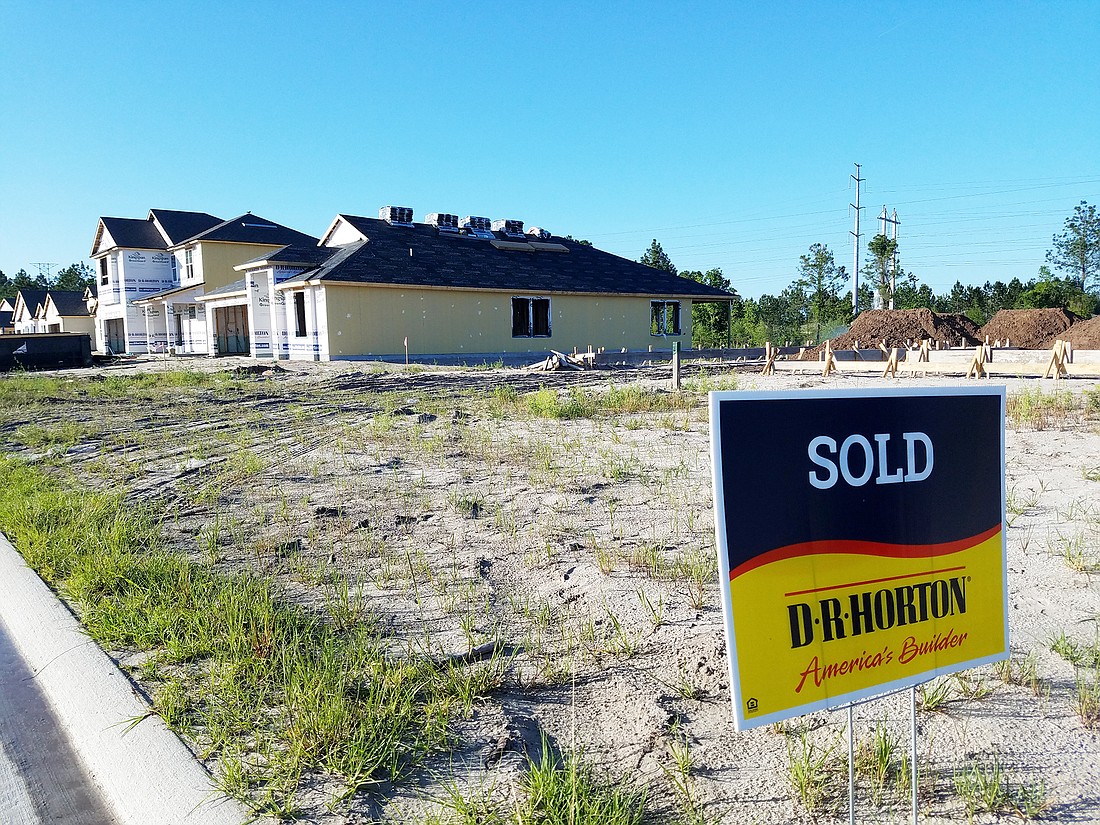
As the housing market slowly recovered from the financial crisis a decade ago, construction became a major engine for job growth in Northeast Florida.
When Jacksonville’s job growth peaked at 3.7% in March 2018, construction led the way, growing at 15% and accounting for nearly a quarter of the 25,000 jobs added in the previous year.
However, job growth has cooled in early 2019 and construction employment has taken a sudden downturn.
The most recent data from the Florida Department of Economic Opportunity, for February, showed construction jobs dropped by 1.3% in the previous 12 months, the first decline in the industry since 2012.
Could this be a bellwether of another housing slump, possibly leading to another recession?
Probably not. Data from the Northeast Florida Builders Association shows the number of building permits issued in Duval, Clay, Nassau and St. Johns counties was slightly higher in the first quarter this year than the first quarter of 2018. That continues a trend of increasing permits that began in 2012.
“Everybody is fairly optimistic,” said Sean Junker, president of NEFBA and also president of Providence Homes in Jacksonville.
“Traffic continues to be very good,” he said, from his contacts with others in the local homebuilding industry.
“They’re happy with the spring so far.”
Junker said he is surprised to see construction jobs declining because homebuilders actually are having problems finding qualified workers.
“There continues to be a shortage of skilled labor,” he said.
Construction of single-family homes may be declining in Duval County, with building permits for them down 12.7% in the first quarter this year.
But new housing communities are growing to the south, with single-family permits in St. Johns County up by 10.2%.
“That area has really progressed in the number of homes being built,” said Melanie Green, communications director for the Northeast Florida Association of Realtors.
The downside to the growth in St. Johns has been the new homes are priced higher, Green said.
“A lot of first-time buyers are priced out of those homes,” she said.
A study by real estate data firm realtor.com shows the disparity of high-priced and low-priced homes for sale is a national issue.
The inventory of homes for sale above $750,000 rose by 11% in the past year but the inventory of homes priced below $200,000 dropped 9%, it said.
The national median home listing price rose 7% in March to reach a record high of $300,000, realtor.com said, driven by the increase in high-priced homes.
“Entry-level inventory scarcity continues,” it said in a news release.
“The continued, albeit slowing, rise in the national median home price in the midst of a market slowdown is likely driven by inventory growth in the high-end of the market.”
Home prices have been rising in the Jacksonville area. NEFAR reported the median sales price of homes in the area grew by 2.3% in the first quarter this year to $220,000, with the price reaching $229,900 in March.
But the supply of housing inventory for sale is low, at 3.6 months. Normally, the Jacksonville market would be considered balanced when there is a five- to six-month supply, Green said.
“The low inventory has been an ongoing key factor in the market for the past couple of years,” she said.
Analysts are expecting homebuying demand to strengthen in the months ahead, with expectations of mortgage rates falling.
The lower rates contributed to a 7% rise in loan applications in March for new home purchases, the Mortgage Bankers Association reported.
“The confluence of declining mortgage rates with the spring buying season is supporting stronger housing demand and activity. Additionally, the drop in average loan size suggests that builders are tilting production to lower-priced homes, which continues to see the tightest inventories and strongest home-price growth,” MBA Chief Economist Mike Fratantoni said in a new release.
“With a strong job market, rising wages and lower mortgage rates, housing demand remains strong,” he said.